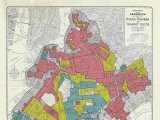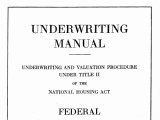You are here:
Housing Policies and Patterns
Most Americans live in segregated areas.1 And most - but not all - schools enroll students based on where they live. Therefore, residential segregation is one key factor in school segregation.
White people are more likely to live in areas that are majority white, and Black people and other people of color are more likely to live in areas that are majority people of color. Is this just the way it is? Is it the result of individual choices and preferences? Or has government policy been involved? Has capitalism been involved? If so, how and why?
Read More
In the early 20th century, white people interested in segregating their cities and neighborhoods tried a variety of tools to do so. They passed local zoning laws to create white or Black zones in their cities - but these laws were struck down by the Supreme Court as unconstitutional because they restricted homeowners’ ability to sell to any potential buyer.2 Segregationists also used voluntary legal agreements among homeowners to prevent white homeowners from selling to buyers who weren’t white. These were accepted by the courts until 1947. And in addition to these policies and practices, white residents used harassment and even violence against Black residents and other people of color who broke the residential color line.3
During the Great Depression, the federal government became involved in housing in new and dramatic ways that also fostered segregation. New programs helped many Americans become homeowners, by offering them more affordable ways to buy homes, by borrowing money and paying it back over decades. These programs favored homes in all- or nearly all-white areas, often in the suburbs rather than the city. Of the people who got these long-term home loans, called mortgages, between 1934 and 1968, more than 98% were were white people.4 Federal policies including these home finance arrangements helped white people leave some urban areas, like Coney Island, and move to segregated white suburbs in the mid-twentieth century.
Public housing construction has also helped create and sustain housing segregation. Federal and local dollars funded public housing, and the federal government set the rules for this housing - including allowing local housing authorities to operate their housing projects on a segregated basis. (For an animated overview of these policies, see Segregation by Design).
Many people who were not policymakers also had a role in creating housing segregation. Real estate agents could decide whether or not to show a family a house, bankers could decide whether or not to approve a family’s application for a home loan, and residents could greet a potential new neighbor warmly, or with hostility or even violence.
Individual racist attitudes motivated some policymakers and others who helped segregate US cities. But segregation also proved very profitable. Bankers made massive profits by participating in federal mortgage programs, while individual (almost exclusively white) homeowners were able to build up wealth through homeownership. When Black people and other people of color were prevented from buying homes with federally-supported mortgages, they often continued as renters, providing profit to their (often white) landlords through rents that were inflated because of ways segregation distorted the housing market.5 In these and other ways, racial segregation was the result of both public governmental and private individual or business activity.
-
Tracy Hadden Loh, Christopher Coes, and Becca Buthe. “Separate and Unequal: Persistent esidential segregation is sustaining racial and economic injustice in the US.” (Washington, DC: Brookings Institution, 2020), accessed June 15, 2024. https://www.brookings.edu/articles/trend-1-separate-and-unequal-neighborhoods-are-sustaining-racial-and-economic-injustice-in-the-us/. ↩︎
-
Richard Rothstein, The Color of Law: A Forgotten History of How Our Government Segregated America (New York: Liveright, 2018). ↩︎
-
Colin Gordon, Patchwork Apartheid: Private Restriction, Racial Segregation, and Urban Inequality (New York: Russell Sage Foundation, 2023). ↩︎
-
Nikole Hannah-Jones, “Living Apart: How the Government Betrayed a Civil Rights Movement Landmark,” ProPublica, June 25, 2015, accessed April 8, 2024, https://www.propublica.org/article/living-apart-how-the-government-betrayed-a-landmark-civil-rights-law. ↩︎
-
Destin Jenkins, “Who Segregated America?” Public Books, December 21, 2017, https://www.publicbooks.org/who-segregated-america/. ↩︎



